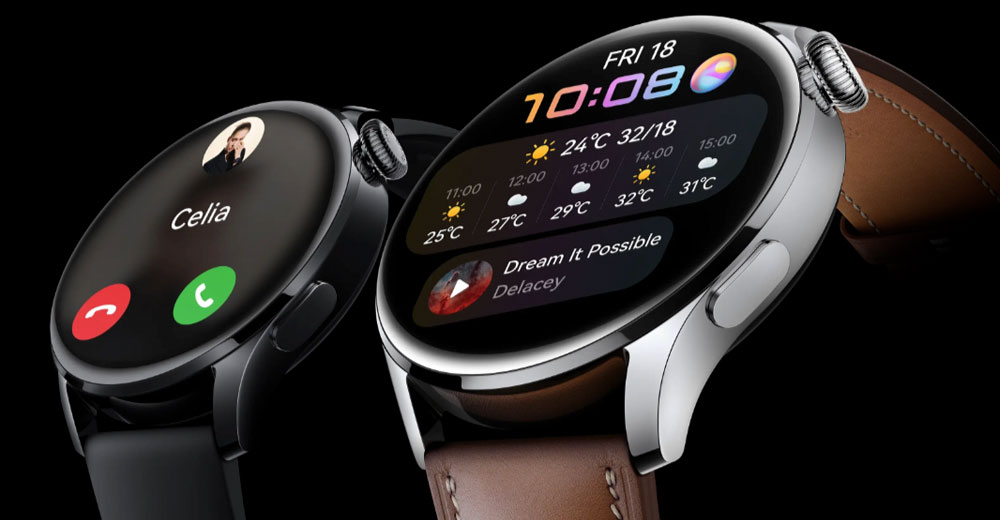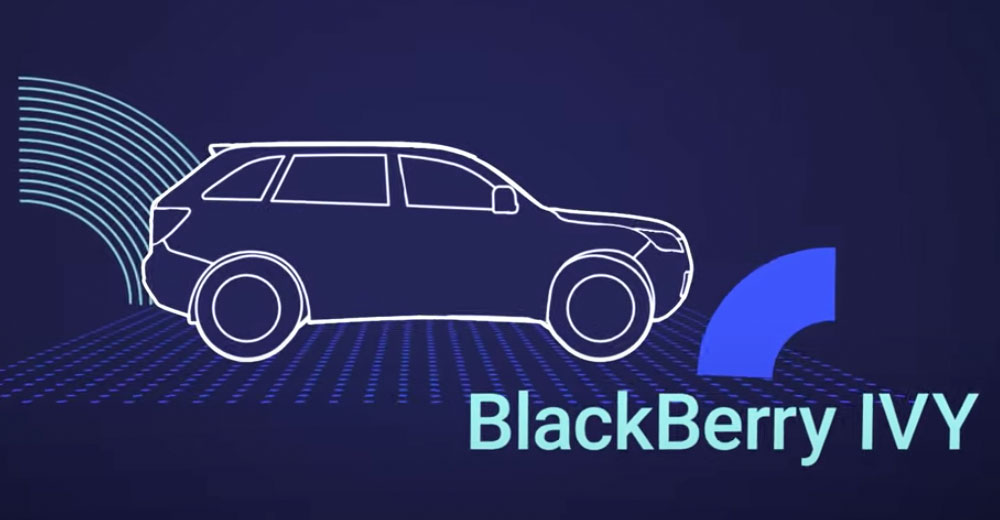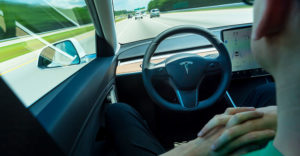BlackBerry held its annual security conference last week. The messaging was split between Blackberry’s impressive updates to its ever-expanding security services — which are among the few using AI in security solutions — and its automotive efforts.
Along with the auto industry, BlackBerry’s automotive initiatives are increasingly focused on electric vehicles that need help to reach their full potential. BlackBerry QNX software is currently installed on 195 million cars on the road, and its platform remains the most popular third-party automotive operating system globally.
The company announced BlackBerry IVY at the event, which is being offered along with AWS to provide the next generation in automotive control and management. As part of this role, BlackBerry highlighted the coming experience with electric vehicles. I found the description compelling and worth covering here because it will make a massive difference.
We’ll close again with my product of the week, the new Huawei Watch 3. It is now the closest product on the market to the Apple Watch — and it uses Huawei’s HarmonyOS, which is on the verge of being better than iOS or macOS because it can replace both.
The Electric Vehicle Power Problem
EVs have a lot of advantages. I drive a Jaguar I-PACE. Its perks include wicked acceleration; a near-appliance-like driving experience (you probably won’t even need to replace brake shoes); and the ability to drive in snow or climb mountains that ICE (internal combustion engine) cars can’t match.
In addition, those of us who have these cars generally charge them at home. One drawback is battery life and the lack of charging infrastructure which lags behind gas station availability. Of course, with gas costs rising rapidly, that gas station access advantage is being offset a bit at the moment.
This lack of a charging network problem has been incredibly annoying because the closest Jaguar dealership to me is 180 miles away. The trip is mostly downhill, so I can get to the dealer quickly enough with a ton of leftover range, but coming home is 180 miles uphill. I’ve had some close calls on the return trip. One time the car automatically shut off while I was rolling into my garage totally out of power.
The I-PACE is a ton of fun to drive distance, but we tend to drive our plug-in hybrid, a new Volvo XC60 that has more than 500 miles of range on gas and electric, to avoid the battery anxiety that comes from driving a pure electric.
This battery power problem is on top of uneven issues with OTA (over-the-air) software updates. There was one update early on that effectively bricked the car because it wasn’t properly vetted.
BlackBerry IVY to the Rescue
What BlackBerry and AWS do with IVY is better integrate the car with the cloud. IVY reduces the related costs to the carmaker and helps futureproof the car by providing consistent software deployments over various platforms. Also, it is agnostic to the vehicles’ OS (it doesn’t have to be on QNX) and cloud platforms (it doesn’t have to use AWS either). Though I expect it will work best with QNX and AWS, where most of the testing is, but it doesn’t lock you in.
What got my attention is how it potentially improves the EV driving experience. Using local processing power, it identifies the user, sets their preferences, and automatically generates a power-efficient route based on the availability of chargers and past driving experience.
For me, that means it would know that coming home from the dealer I’m going to have much less range, and it will automatically route me to a Level 3 charger, if I need it, to assure I get home safely.
This capability is essential because you aren’t supposed to tow an electric car. While a few tow trucks can now charge your car, most still cannot. So, if you run out of electricity, you must have your car trailered to a charger.
With IVY the car will adjust for projected traffic, which could extend or reduce your range depending on the temperature and the nature of that traffic. It is interesting to note that heavier traffic may extend your range unless it is unusually hot or cold. ICE cars get better gas mileage at highway speeds and lower mileage in congested traffic. EVs are often the opposite.
Regardless, you need to trust the range estimates, which, today, while improved over time, are still less accurate than most of us would like, and it looks like IVY could make this far better.
Managing a Supercomputer on Wheels
One of the things Tesla got right from the start, which is partially why Teslas tend to do better than other EVs, is that they understood that EVs are rolling computers, not gas cars with electric motors.
As autonomous driving advances, EVs are becoming supercomputers. For instance, Tesla mirrors Apple more than it does a typical car company, and the result has been a far better user experience with the technical parts of the car.
Granted, Tesla has had huge quality issues, suggesting it may have not yet fully grasped the car part of the solution. Still, the company tends to rank at the top regarding software updates, customer loyalty, and energy management.
However, much like Apple, Tesla’s revolutionary behavior has been chiefly Tesla-only. The other car companies seem to be learning by doing, for the most part, which has hurt their related user experience. While other carmakers have beaten Tesla in build quality, Tesla tends to lead with overall driving experience.
BlackBerry IVY potentially flips this script to give car companies that use it an operability advantage that is even more customer-focused than Tesla’s — thus assuring their higher build quality isn’t negatively offset by an inferior user experience.
Wrapping Up
Electric cars are the future. They provide many advantages, like not sweating the rapidly increasing cost of gasoline. Range anxiety still haunts the class, and the full potential of the rolling computer concept is mainly enjoyed by Tesla.
BlackBerry and AWS have developed IVY to provide a solution that can work with various carmakers to improve the driving experience and OTA software update process, to ensure quality and eliminate much of that range anxiety.
As a result, BlackBerry IVY may be on the critical path to replacing ICE cars with EVs while delivering in unison the full benefit of the power source and the user experience.
BlackBerry IVY will help assure that future electric vehicles move past the problems that plague first- and second-gen EVs to make those on the way more useful and practical at the same time.

Huawei Watch 3
Apple makes the best smartwatch. However, it only works with the iPhone, repeating Steve Jobs’ mistake with the first iPod. That being said, there’s nothing close to the Apple Watch for those of us on Android phones — well, until now. We’ve been missing all the sensors and the ability to use the watch as a stand-alone device, allowing us to leave our smartphone behind.
The Huawei Watch 3 comes closer than any other smartwatch I’ve tested to match the Apple Watch, and it even does some things better.
For instance, it looks more like a watch with a round face and it has a winding crown which better enables you to scroll through menu items and not be overwhelmed with buttons. In addition, against the new Apple Watch’s 18 hours of battery life, the Huawei Watch 3 gets between two and three days with the features enabled (14 days in standby is estimated but I didn’t test this).

Huawei Watch 3 | Huawei Watch 3 Pro
The Huawei comes close to the Apple on sensors, and it supports LTE, so you can not only take and make calls with the Watch 3 when you have the phone, but it will also work if you connect it to your cell phone provider (4G) and leave your phone behind.
Watch 3 uses the new Huawei HarmonyOS, which means it’s light on apps by a lot compared to the Apple Watch. But I don’t use many apps on my Watch 3 and the Huawei Health app seems pretty comprehensive.
Given how the U.S. treats Huawei, finding the Watch 3 here is problematic, though at the time of this writing eBay has the Classic Edition for $419.
If you are an Apple user, the Apple Watch is still your best bet. But if you want an excellent-looking alternative that goes better with an Android phone, the Huawei Watch 3 is a decent choice and my product of the week.
As I’ve mentioned in other columns, it’s incredible how often the third generation of tech products — and particularly smart devices — seem to be so much better than prior generations. Once again with the Huawei Watch 3, the third time’s a charm.



























































